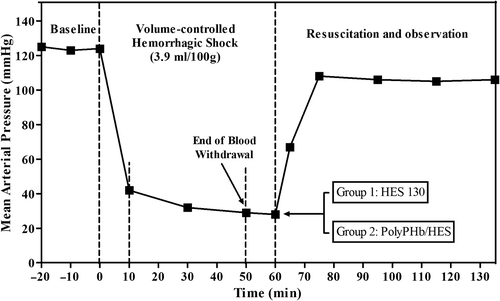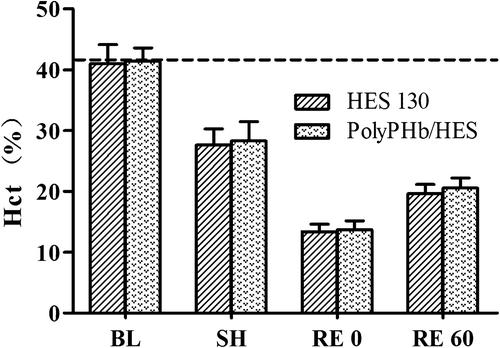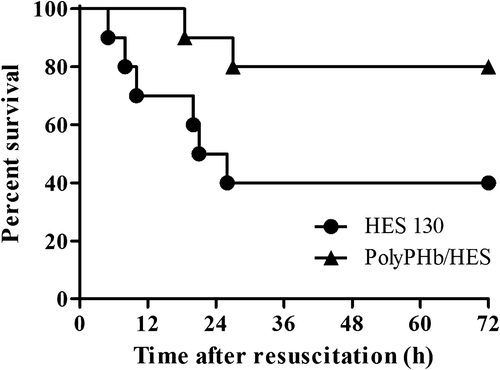Figures & data
Table I. Properties of PolyPHb and HES solutions.
Figure 1. Volume-controlled hemorrhagic shock model in Sprague–Dawley rats. Hemorrhage (60% of BV) was completed by two steps: rapid hemorrhage (30% of BV) from 0 to 10 min and slow hemorrhage (30% of BV) from 10 to 50 min; resuscitation with PolyPHb/HES (in a 1:2 ratio) and HES 130 alone solutions from 60 to 75 min; and the observation until 72 h.

Figure 2. Hematocrit of rat arterial blood at baseline, during shock and after resuscitation. Data were presented as Mean ± SD (n = 7–8).

Figure 3. Survival rate of Sprague–Dawley rats after resuscitation from hemorrhagic shock with infusion of PolyPHb/HES (in a 1:2 ratio) and HES 130/0.4 alone.

Table II. Mean arterial pressure (MAP) and heart rate (HR).
Table III. Arterial blood gas during the experiment.



